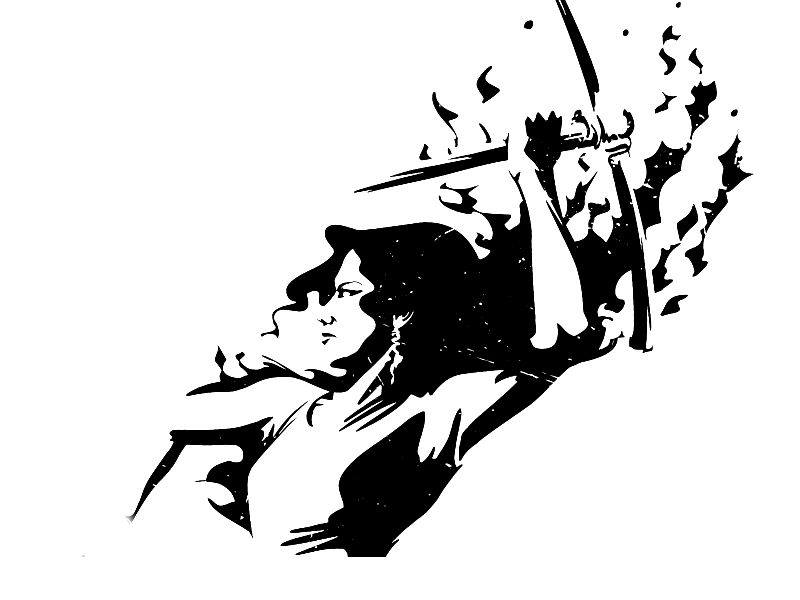
Soon after the start of the Second World War in 1939, the Νazi Regime decided to remove all Roma and Sinti from the territory of the Third Reich. They were ordered to resettle and were placed in Jewish ghettos and camps for Jews. The first deportation took place on 16 May 1940 from Ravensburg to camps in occupied Poland.
On 16 December 1942, the deportation of all remaining Sinti and Roma was ordered. The Gypsy family camp known as the “Zigeunerlager” was set up in Auschwitz-Birkenau sector BIIe.[1] The Zigeunerlager was a ”mixed” camp, with men, women and children imprisoned together.
On 15 May 1944, the 6000 Roma in the camp were warned that the Nazis were planning their execution. On 16 May 1944, more than 600 Roma prisoners did not show up for the usual morning roll call but barricaded themselves into their barracks. They had broken into an equipment warehouse and armed themselves with hammers, pickaxes and shovels, and taken apart the wooden sections of the bunks they slept on to make weapons. As a result of their defiance, no Roma or Sinti died in the gas chambers on that day. This act of resistance troubled the Nazi Regime. Fearing a camp-wide revolt, 3000 Roma were transferred to other camps. On 2 August 1944, the Nazis gassed the remaining 3000 Roma prisoners in the Blle camp.
The courageous revolt of 16 May 1944 – a fight for the right to life and humanity – is widely referred to as Romani Resistance Day.
The Council of Europe Youth Department has dedicated an entire chapter on “Resistance” in the Right to Remember Handbook for Education with Young People on the Roma Genocide.[2]
Remembrance plays an important role in the process of coming to terms with what happened and commemorative practices help to ensure reconciliation, healing and non-repetition of the crimes of the past. Only memory of rights violations can nurture the future of human rights in the world, thus providing a substantive link between past and future[3] and a change in the narrative about Roma people.
”May 16th is the reminder that there is no destructive force which cannot be opposed. In a 1940s Europe awed by the overarching National Socialist rule and the tacit complicity of so many countries, resistance was not even dreamed of. With racial laws justifying the atrocious treatment of groups deemed to be not worthy of living along with the superior race, and overt annihilation strategies, the hierarchy of state led production of knowledge invaded every field of existence, to the most basic elements that sustain life. However, uprising appeared where most unexpected, in defiance to a monstrous rational model that had to prove efficient in the efforts to dispose of millions of people. On the night of 16th of May 1944 in the Auschwitz-Birkenau concentration camp, the entire Roma population of the camp revolted against their aggressors, in a desperate attempt to defend themselves from sure death. The testimonies of the survivors from the neighbouring camp reveal a story that was only rarely told, a story of the Pharrajimos and its victims who fought, until the last moment, for their right to life and humanity.” Mihai-Alexandru Ilioaia – Holocaust survivor [4]
[1] Sinti and Roma (Gypsies) in Auschwitz: http://auschwitz.org/en/history/categories-of-prisoners/sinti-and-roma-gypsies-in-auschwitz/
[2] Right to Remember – A Handbook for Education with Young People on the Roma Genocide: https://rm.coe.int/168008b633
[3] Huyssen, Andreas (2011) ”International Human Rights and the Politics of Memory: Limits and Challenges,” Criticism: Vol. 53: Iss. 4, Article 6
[4] 16 May: Romani Resistance Day – https://romediafoundation.wordpress.com/2016/05/16/16-may-romani-resistance-day/
16 majo 1944 – te das amen godi pe kado ges
But sig kana telardas o Dujto Lumako Maribe ande 1939 bersh, e Nacistosko Rezimo las decizija te nashavel sa le Rom thaj Sintura katar e teritorija le Tritonesko Rajho. Sas len odrero ten thon len ande getura thaj kampura ande save sas le Zidovura. E majangluni deportacija karing le kampura/lagerura ande Polska, telardas ando 16 majo 1940 katar o kampo ando Ravenzburg.
Ko 16 decembro 1942, sas odredo te deportirin sa le Rom thaj Sintura. O Romano familijako kampo/lagero pendzardo sar “Zigeunerlager” sas vazdino ko Auschwitz-Birkenau sektoro BIIe.[1] Ando “Zigeunerlager” sas phandine mursha, dzuvlja thaj shavore.
Ando 15 majo 1944, le 6000 Romenge katar o kampo/lagero sas phendino garavde ke le Nazi planirin lengiri egzekucija. Ando 16 majo 1944, majbut katar 600 Roma chi gele ando deteharinako ginavipe thaj ashile barikadirime/phange ande pengere barake.. Von phagle jekh depozito kote sas le cokanura, thovera thah lopae thaj katar e phalja ande save sovena kherge kasht maribaske. Sar rezultato katar lengoro maribe chi jekh Rom na sas gazuimo ande komora. Le Rezime chi chalas le kadi rezistencija le Romengi. Daravindor ke kadi situacija kam kherel revolt thaj kam dzal majdur, 3000 Roma sas bishalde ande aver kampura/lagerura. Ko 2 augusto 1944, le Nazi gazuisarde le 3000 Roma save ashile ande BIIe kampo/lagero.
Kado kurazo thaj revolt katar o 16 majo 1944 – o maribe vash pengo trajo thaj manushikanipe – si prendzardo kar le Romengo rezistencijako ges.
O deparatamento katar le terne ando Konsilo le Evropako ande lengoro lil “Right to Remember Handbook for Education with Young People on the Roma Genocide”[2] si entrego kotor pe Romengi rezistencija.
O liparipe khelel bari rolja ando jehk proceso savo sikavel o relatiteto (so sas), thaj le komemoracijakere praktike azutin te resel pe e rekonsiliacija, te ushel pe katar o namboromipe, thaj ten a kerel pe inke jekh drom kado historicno kriminalo/dukhavipe. E memorija katar o phagipe le pravosko/chachipenosko shaj te vazden le manushikane chachipena ande luma, numa kana si linko maskhar e nakhli vrama thaj o avutnipe,[3] thaj o paruvipe katar o narativo le Romengoro.
“16 majo, si te das amen godi ke naj kasave destrukcijakere sile save chi shaj te maren pe. Ande 1940 May 16th I Evropa nakadas e Nacionalno Socijalistikane zakonura thaj e na-phendi kolaboracija le themengiri kadale zakonenca, thaj e rezistencija na sas ni pe lengere sune. Le rasitichno zkonenca save del pe voja pal o namanushikano phiravipe le grupengo savo von gindin ke chi trebal te egzistun jek-ajekhe thaneste le superiorno rasasa, thaj le mudaripaski strategija, le themeski hierarhija das dzanipe, e themeskiri strategija produkuisaras dzanipe savo okupisardas svako kotor le egzistencijako dzi ko maj bazichno elemento savo inkerel o trajo. Numa e rezistencija vazdas pe ande momento kana knonik chi azukerdas, saj jekh defenziva pal kado monstrumo modelo savo trebal te sikavel ke si efektivno thaj efikasno ando mudaripe le manushengo. Racate ando 16 majo 1944 ko Auschwitz-Birkenau koncentracijako kampo/lagero e sasti romani populacija vazdas pe te bronin pengoro trajo. E vakeripena katar e svedokura save train sine ande barake save sas pashe dzi le Romenge phenen jekh paramis, e paramis pal o Pharrajimos thaj peskere viktimura save marde pe vash lengoro drajo dzi ko palutno momento. Mihai-Alexandru Ilioaia – Holocaust survivor”[4]
[1] Sinti and Roma (Gypsies) in Auschwitz: http://auschwitz.org/en/history/categories-of-prisoners/sinti-and-roma-gypsies-in-auschwitz/
[2] Right to Remember – A Handbook for Education with Young People on the Roma Genocide: https://rm.coe.int/168008b633
[3] Huyssen, Andreas (2011) ”International Human Rights and the Politics of Memory: Limits and Challenges,” Criticism: Vol. 53: Iss. 4, Article 6
[4] 16 May: Romani Resistance Day – https://romediafoundation.wordpress.com/2016/05/16/16-may-romani-resistance-day/
Källa: https://www.coe.int/
Redaktionen
redaktionen@dikko.nu
Att vara en oberoende tidning kostar pengar så vill du hjälpa oss med att betala vårt fika får du gärna swisha en slant till 123 242 83 40 eller bg: 5534-0046
Vill du annonsera eller sponsra, synas eller höras i våra media?
Kontakta oss på redaktionen@dikko.nu
eller ring 0768 44 51 61
IBAN: SE19 9500 0099 6042 1813 4395
BIC: NDEASESS




